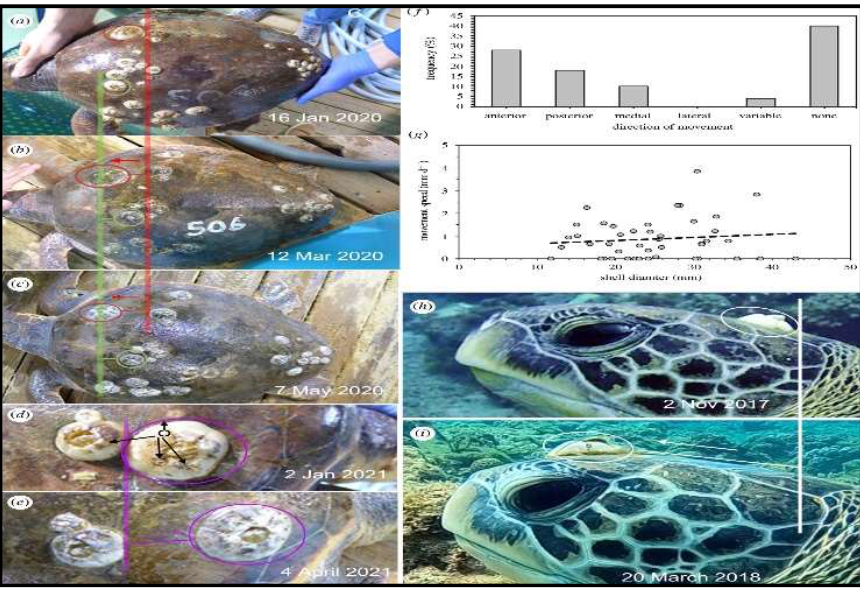News by Gurmehar Kaur
Taipei, Oct 16: A barnacle is an arthropod, a crustacean leading a sessile (permanently attached) lifestyle. They survive on small particles of food floating near them.
Researchers have recently found out that sea turtle barnacles (Chelonibia testudinaria) have evolved in the last 500 million years to finally gain mobility. A barnacle on the head of a green sea turtle moved forward over several months ending up near the turtle’s eyes. It must have been a better location for feeding. It has moved around 78.6 millimeters during this time. They tracked their movement under captivity over a few months. Their positions were marked and then tracked. Meanwhile, they tested their mobility also in the lab. They transferred 15 turtle barnacles from crabs to an acrylic plate. Then they followed their movement with time-series photography for one year. It moved leaving trails of cement (an adhesive substance found on their base) in layered, crescent-shaped patterns. Movements on live hosts and acrylic plates occasionally saw abrupt course alterations and they move directly against water flow. This suggests that barnacles use locomotion to improve feeding.

captive sea turtles
Credits: Benny K.K. Chan et.al/rspb 2021

